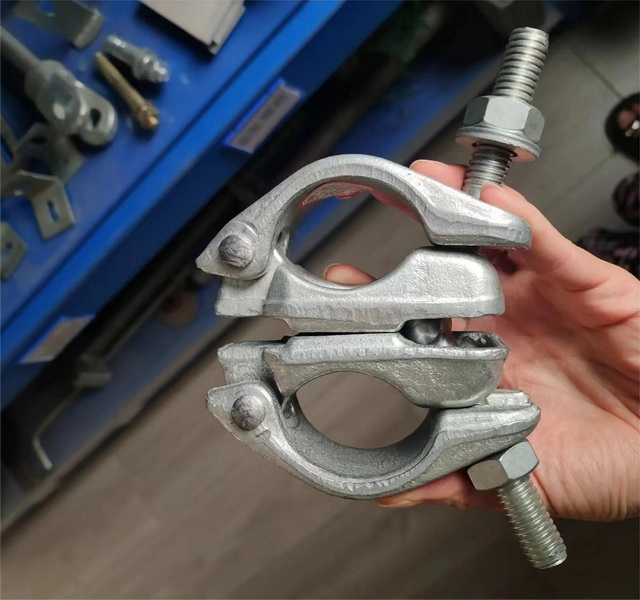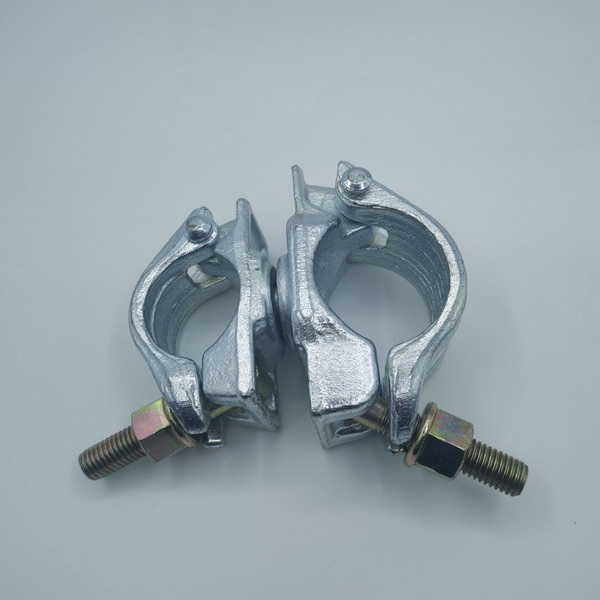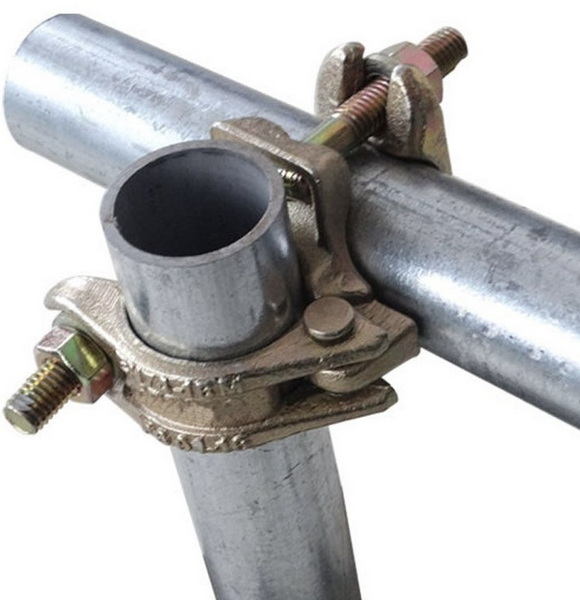Content Menu
● What Is a Double Coupler in Scaffolding?
● Importance of Testing Double Coupler Capacity
● Standards Governing Double Coupler Testing
● How to Test the Capacity of a Double Coupler
>> 1. Raw Material Inspection
>> 2. Dimensional and Visual Inspection
>> 3. Slip Resistance Test
>> 4. Distortion (Failure) Test
>> 5. Corrosion Resistance Test
>> 6. Functional Testing
● Materials and Types of Double Couplers
>> Drop Forged Double Couplers
>> Pressed Steel Double Couplers
>> Surface Finishes
● Factors Affecting Double Coupler Capacity
● Practical Considerations for Using Double Couplers
● Load Capacity Summary of Double Couplers
● Additional Insights on Testing Procedures
● Safety Implications of Double Coupler Capacity
● Conclusion
● FAQ
>> 1. What is the typical load capacity of a double coupler in scaffolding?
>> 2. How is the slip resistance of a double coupler tested?
>> 3. What materials are double couplers made from?
>> 4. Why is torque specification important when tightening double couplers?
>> 5. Can double couplers be reused after testing?
Double couplers are fundamental components in tube and coupler scaffolding systems, connecting two scaffold tubes at right angles (90 degrees) to provide structural stability. Understanding how to test the double coupler capacity scaffolding is crucial to ensure safety, reliability, and compliance with industry standards. This comprehensive article covers the testing methods, standards, load capacities, and practical considerations for double couplers.

What Is a Double Coupler in Scaffolding?
A double coupler (also known as a right-angle coupler or fixed coupler) is a mechanical fitting used to join two scaffold tubes at a 90-degree angle. It is designed to create rigid, load-bearing connections between vertical standards and horizontal ledgers or transoms in scaffolding structures.
- Typically made from drop forged steel or pressed steel.
- Finished with hot-dip galvanizing or zinc plating for corrosion resistance.
- Used extensively in tube and coupler scaffolding systems.
- Designed to resist both slip and distortion under load.
Importance of Testing Double Coupler Capacity
Testing the capacity of double couplers ensures they can safely bear the loads imposed during scaffolding use, including:
- Worker weight and equipment.
- Construction materials.
- Environmental forces like wind or seismic activity.
Proper testing helps prevent scaffold failures, accidents, and injuries on construction sites.
Standards Governing Double Coupler Testing
Double couplers must comply with international standards such as:
- EN 74 (European Standard): Specifies performance requirements and test methods for couplers.
- BS 1139 (British Standard): Covers scaffolding tubes and fittings.
- AS/NZS 1576 (Australian/New Zealand Standard): Details scaffold components requirements.
- OSHA (USA): Provides safety regulations for scaffolding.
These standards define:
- Minimum slip resistance.
- Failure load thresholds.
- Torque specifications for tightening.
- Testing procedures for distortion and load-bearing capacity.
How to Test the Capacity of a Double Coupler
Testing double coupler capacity involves several key procedures to evaluate strength, slip resistance, and durability.
1. Raw Material Inspection
- Verify steel quality, chemical composition, and mechanical properties.
- Ensure material meets required tensile strength (typically around 457 MPa) and yield strength (around 385 MPa).
2. Dimensional and Visual Inspection
- Check coupler dimensions for compliance.
- Inspect for defects such as cracks, incomplete forging, or surface irregularities.
3. Slip Resistance Test
- Assemble the double coupler onto two scaffold tubes (usually 48.3 mm diameter).
- Tighten bolts to the specified torque (commonly 54 Nm).
- Apply axial load to test slip resistance.
- The coupler must resist slipping under a minimum load of 6.25 kN (approximately 637 kgf) for EN 74 Class B couplers.
4. Distortion (Failure) Test
- Load the coupler to failure in a controlled environment.
- Measure the maximum load the coupler can withstand before permanent deformation or breakage.
- EN 74 Class B double couplers typically have failure loads exceeding 30 kN (around 3,000 kgf).
5. Corrosion Resistance Test
- Subject couplers to salt spray or galvanizing quality tests.
- Ensure coatings protect against rust and environmental damage.
6. Functional Testing
- Simulate real-world assembly and disassembly.
- Verify bolt and nut functionality, ease of tightening, and locking reliability.

Materials and Types of Double Couplers
Drop Forged Double Couplers
- Made from forged steel for maximum strength.
- Heavier, typically around 1.0 to 1.45 kg.
- Higher load capacities and durability.
- Preferred for heavy-duty scaffolding applications.
Pressed Steel Double Couplers
- Formed by pressing steel plates.
- Lighter, around 0.85 to 1.0 kg.
- Slightly lower load capacity but still meets safety standards.
- Common in lighter scaffolding uses.
Surface Finishes
- Hot-Dip Galvanized: Provides excellent corrosion resistance.
- Zinc Plated: Lighter coating, suitable for indoor or less corrosive environments.
Factors Affecting Double Coupler Capacity
- Material Quality: Higher-grade steel improves strength and durability.
- Manufacturing Process: Forged couplers generally outperform pressed types.
- Tightening Torque: Proper tightening (around 54 Nm) is essential for maximum slip resistance.
- Coupler Design: Reinforced couplers with thicker walls and robust bolts have higher load capacities.
- Environmental Conditions: Corrosion can weaken couplers if protective coatings fail.
Practical Considerations for Using Double Couplers
- Always use couplers certified to meet relevant standards.
- Inspect couplers before use for damage or wear.
- Use calibrated torque wrenches to tighten bolts correctly.
- Replace couplers showing signs of deformation or corrosion.
- Consider load requirements and select couplers accordingly.
Load Capacity Summary of Double Couplers
| Coupler Type | Slip Resistance (kN) | Failure Load (kN) | Weight (kg) | Typical Use |
| Forged Double Coupler | > 6.25 | > 30 | 1.0 - 1.45 | Heavy-duty scaffolding |
| Pressed Steel Coupler | ~10 (EN74-1A) | ~20 | 0.85 - 1.0 | Light to medium scaffolding |
| Aluminum Coupler | Lower than steel | Lower | Lighter | Specialized lightweight use |
Additional Insights on Testing Procedures
To ensure comprehensive evaluation, testing laboratories often perform cyclic loading tests to simulate real-world repetitive stresses on double couplers. This helps assess fatigue resistance, which is critical in long-term scaffolding applications. Moreover, non-destructive testing methods such as ultrasonic inspection can detect internal flaws in forged couplers before they are put into service.
Safety Implications of Double Coupler Capacity
Understanding the capacity of double couplers directly impacts scaffold safety. Insufficient capacity or improper installation can lead to catastrophic failures, endangering workers and causing costly project delays. Therefore, rigorous testing and adherence to torque specifications are non-negotiable safety practices.
Conclusion
Testing the double coupler capacity scaffolding is a vital process to ensure the safety and reliability of scaffolding structures. Through rigorous slip resistance, distortion, and corrosion tests, manufacturers verify that couplers meet strict international standards such as EN 74 and BS 1139. Proper material selection, manufacturing quality, and correct installation practices all contribute to the coupler's ability to safely bear loads in demanding construction environments. By understanding these testing methods and adhering to safety guidelines, construction professionals can confidently rely on double couplers to provide secure, durable scaffold connections.

FAQ
1. What is the typical load capacity of a double coupler in scaffolding?
A standard forged double coupler typically has a slip resistance exceeding 6.25 kN and a failure load over 30 kN, making it suitable for heavy-duty scaffolding applications.
2. How is the slip resistance of a double coupler tested?
Slip resistance is tested by tightening the coupler to a specified torque (usually 54 Nm) on scaffold tubes and applying axial loads to ensure the coupler does not slip under the minimum required force.
3. What materials are double couplers made from?
Double couplers are commonly made from drop forged steel or pressed steel, with protective finishes such as hot-dip galvanizing or zinc plating for corrosion resistance.
4. Why is torque specification important when tightening double couplers?
Proper torque ensures the coupler clamps securely without slipping or damaging components. Under-tightening can cause slippage, while over-tightening may damage the coupler or scaffold tubes.
5. Can double couplers be reused after testing?
Yes, as long as they pass inspection for damage, corrosion, and maintain their mechanical integrity, double couplers can be reused multiple times in scaffolding assemblies.






















